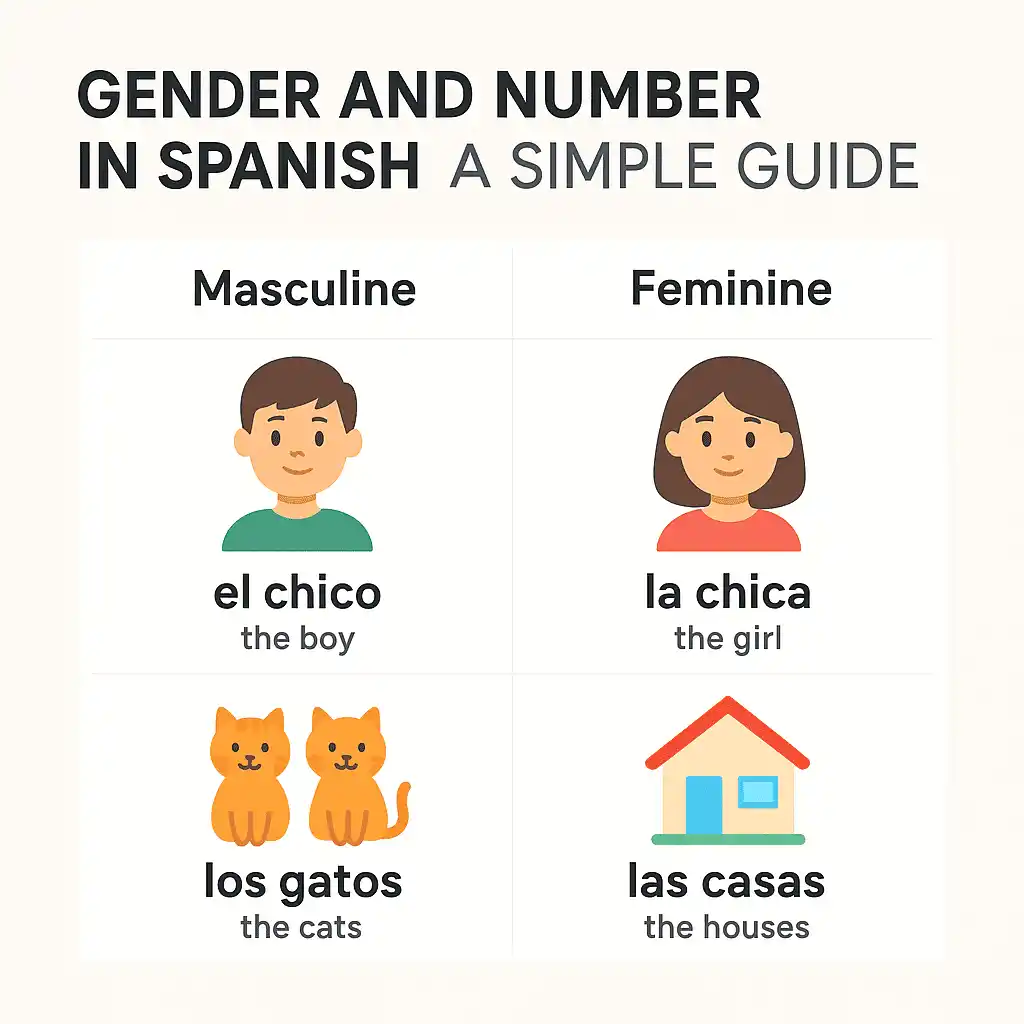Understanding Spanish adjectives agreement can feel tricky at first. There are many Spanish gender rules and Spanish plural rules, but I promise that after reading this post, you’ll have a much clearer idea of how they work.
Spanish masculine and feminine: the basics
Every noun in Spanish is either masculine or feminine. Yep — even objects!
In most cases, words ending in -o are masculine (el libro – the book), and words ending in -a are feminine (la casa – the house).
But there are some exceptions. For example, el día (the day) ends in -a but is masculine, while la mano (the hand) ends in -o but is feminine. These are just special cases you’ll get used to with time and practice.
So, when to use feminine and masculine in Spanish?
It depends on the noun itself — adjectives, articles, and other words that describe or refer to the noun must agree with it in gender.
Example:
- El chico alto → The tall boy
- La chica alta → The tall girl
Notice how alto changes to alta to match the gender of the noun. This is called Spanish adjectives agreement, and it’s one of the most important grammar rules to sound natural in Spanish.
Making nouns plural in Spanish
Now that you know about gender, let’s look at number. Learning how to make nouns plural in Spanish is quite simple:
- If a word ends in a vowel, just add -s:
- libro → libros
- casa → casas
- If it ends in a consonant, add -es:
- papel → papeles
- animal → animales
And don’t forget: when something is plural, the article and adjective must also be plural!
Example:
- El gato negro → Los gatos negros
- La casa blanca → Las casas blancas
This is another example of Spanish adjectives agreement — everything changes together: article, noun, and adjective.

How to APPLY Spanish adjectives agreement
Once you know whether a noun is masculine or feminine, singular or plural, the adjective that describes it must match those features. This is called adjective agreement in Spanish.
Let’s break it down:
- If the noun is masculine singular, the adjective usually ends in -o.
- El perro negro → The black dog
- If the noun is feminine singular, the adjective usually ends in -a.
- La flor roja → The red flower
- For masculine plural, add -os.
- Los perros negros → The black dogs
- For feminine plural, add -as.
- Las flores rojas → The red flowers
Some adjectives, like those ending in -e or a consonant, don’t change for gender, only for number:
- El coche grande / La casa grande
- Los coches grandes / Las casas grandes
In short, adjectives must “agree” with the noun they describe in both gender and number — that’s the key to mastering Spanish adjectives agreement.
A quick recap
- Spanish nouns have gender: masculine or feminine.
- Adjectives and articles must agree in gender and number.
- To make nouns plural, follow simple Spanish plural rules.
Once you get the hang of it, these patterns become automatic — and your Spanish will sound much more natural!
Want to go deeper?
If you’d like to master this topic with clear explanations and practical exercises, check out my worksheet on Spanish adjectives agreement. It covers everything in more detail — from tricky exceptions to extra practice activities — so you can finally feel confident using Spanish masculine and feminine forms and plurals correctly.
